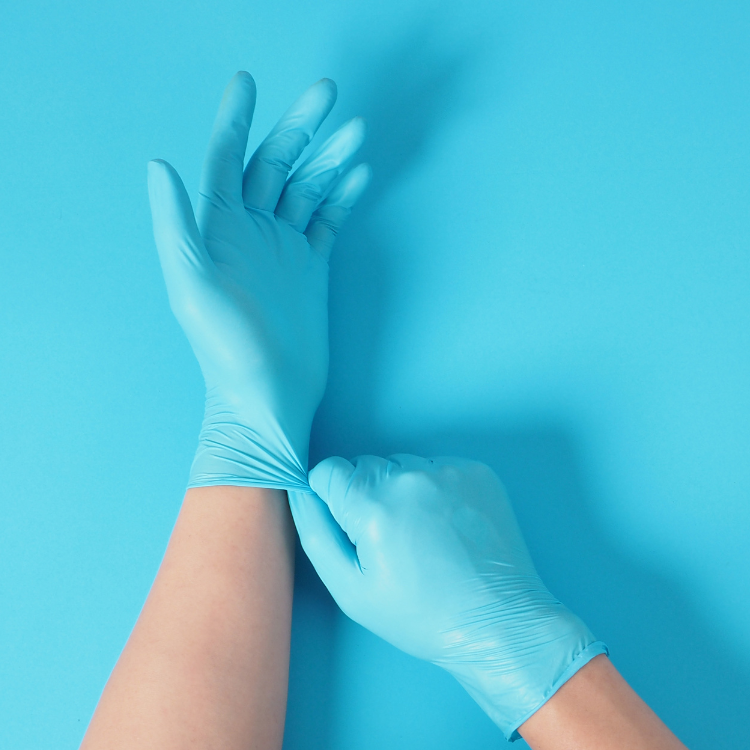Choosing the right medical gloves is crucial for the safety of both patients and medical staff. Learn the differences between surgical and diagnostic gloves and the standards that apply to them. Learn how to effectively select the right models for specific medical tasks. We invite you to read and learn about all important aspects!
The use of medical gloves
Surgical and diagnostic gloves are an indispensable element of the equipment of every medical facility. Depending on the type, they are intended for different applications. Surgical gloves, as the name suggests, are used during surgery, guaranteeing the highest level of hygiene and safety for both the patient and the doctor. They are made of materials with a high level of resistance to abrasion and puncture, which is especially important during operations where there is a risk of injury.
In turn, diagnostic gloves are used mainly in medical examinations, during which direct contact with the patient's body is necessary. They are much thinner than surgical specimens, which ensures better sensitivity to touch, enabling accurate and precise examination. Both surgical and diagnostic gloves are necessary for the proper work of doctors and guarantee their protection against possible contact with pathogenic microorganisms.
Materials used in the production of medical gloves
The materials used in the production of medical gloves are diverse and selected with a specific application in mind. Latex gloves are often chosen because of their exceptional flexibility and fit to the shape of the hand. They are often used in surgical procedures. Nevertheless, some users may have allergic reactions to latex, which brings to the fore the alternatives - nitrile and vinyl gloves.
Nitrile gloves, made of synthetic rubber, are a popular choice for people with latex allergies. They are characterized by high resistance to stretching and puncture. Unlike latex gloves, they are resistant to many chemicals, hence their popularity for diagnostic purposes. Vinyl gloves are an economical alternative to latex and nitrile. They are less resistant to abrasions and punctures, but provide a satisfactory level of barrier for low-risk tasks such as diagnostic tests. All these types of gloves have their own unique qualifications that make them suitable for various applications in the medical environment.
AQL index in the context of medical gloves
The most important parameter of medical gloves is the AQL (Acceptance Quality Limit) indicator, i.e. the number of micro-holes in the glove material, tested using a water test.
The primary purpose of the AQL indicator is to ensure that medical gloves are able to effectively protect users against biological agents while minimizing the risk of cross-infection. In the context of medical gloves, tightness is extremely important because even the smallest leaks can lead to the transmission of pathogens.
The AQL should be at least 1.5, which means that holes smaller than 25-50 µm were detected in the material per 1000 ml of water. The lower the AQL value (0.65; 1.0; 1.5), the higher the level of safety. For example, gloves with AQL 1.0 are tighter than gloves with AQL 1.5.
When there is no AQL information on the packaging of medical gloves, their tightness cannot be guaranteed. This is important for users who rely on these products to provide protection against biological agents. By complying with the AQL standard and compliance with the EN 455 standard, customers can be sure that the gloves they choose meet the highest quality and safety standards.
What are the characteristics of surgical gloves?
Surgical gloves are a key element of every surgeon's equipment, ensuring safety and hygiene during the procedure. Made of materials with high resistance to abrasion and puncture, such as latex or nitrile, they provide optimal protection against potential threats, such as contact with pathogenic microorganisms or damage during surgery.
A characteristic feature of surgical gloves is their sterility. These products must undergo a sterilization process before they reach the doctor. This is especially important during surgical procedures where the risk of infection is high. Additionally, they meet strict AQL standards, which define the acceptable level of defects. Sterile gloves, including surgical gloves, are characterized by a much lower level of permissible defects than non-sterile gloves, which further increases their safety and reliability.
Variations in testing and certification
The testing and certification processes for surgical and examination gloves are an area where we see significant variation. Certification of surgical gloves is much more stringent due to the location and conditions in which they are used. The key differences between these processes can be summarized in a few points:
Surgical gloves, due to their use, must comply with more stringent quality standards. The main tests include: puncture resistance, flexibility and tension strength. However, the most important thing is the water resistance test, which allows you to detect potential leaks.
Diagnostic gloves, intended mainly for medical examinations, do not have to meet such strict quality standards. Although they are also tested for puncture resistance, flexibility and tensile strength, a waterproof test is not required.
Of course, both types of gloves must meet basic sanitary and hygienic standards and be compliant with international regulations regarding medical products. However, differences in testing and certification processes result from their specific applications, which have a direct impact on the safety of patients and medical staff.
When should you choose surgical gloves?
Surgical gloves, also called sterile gloves, are an integral part of medical staff's equipment when performing more complicated procedures requiring the highest level of hygiene and safety. Choosing this type of gloves is especially advisable in specific situations that include:
- Surgical procedures: These are the main uses of surgical gloves. The high risk of infection in the operating room requires the use of sterile gloves that are individually packed and sterilized.
- Invasive procedures: Surgical gloves are necessary during invasive medical procedures such as catheterization and punctures.
- Situations where there is a high risk of contact with infectious substances: The use of surgical gloves is advisable when handling sharp instruments that may lead to accidental wounds, or when contacting foreign bodies that may be carriers of pathogenic microorganisms.
To sum up, surgical or sterile gloves, as they are also called, are key protective equipment in the medical environment. Their proper use in appropriate situations is important to ensure the highest level of safety for both patients and medical staff.





